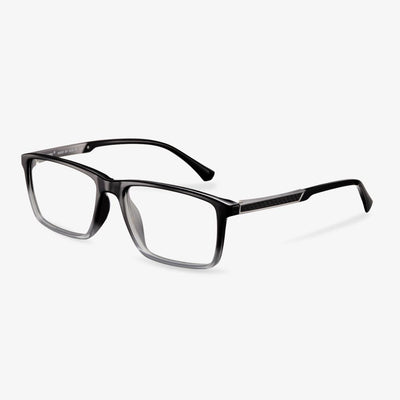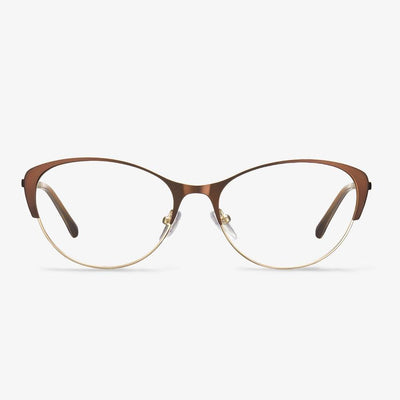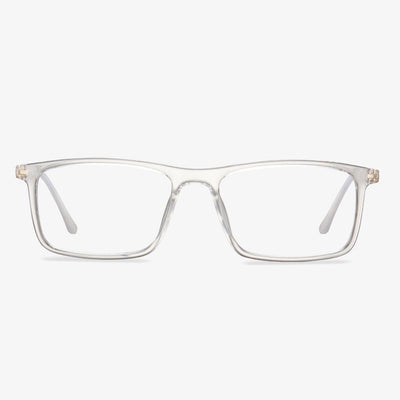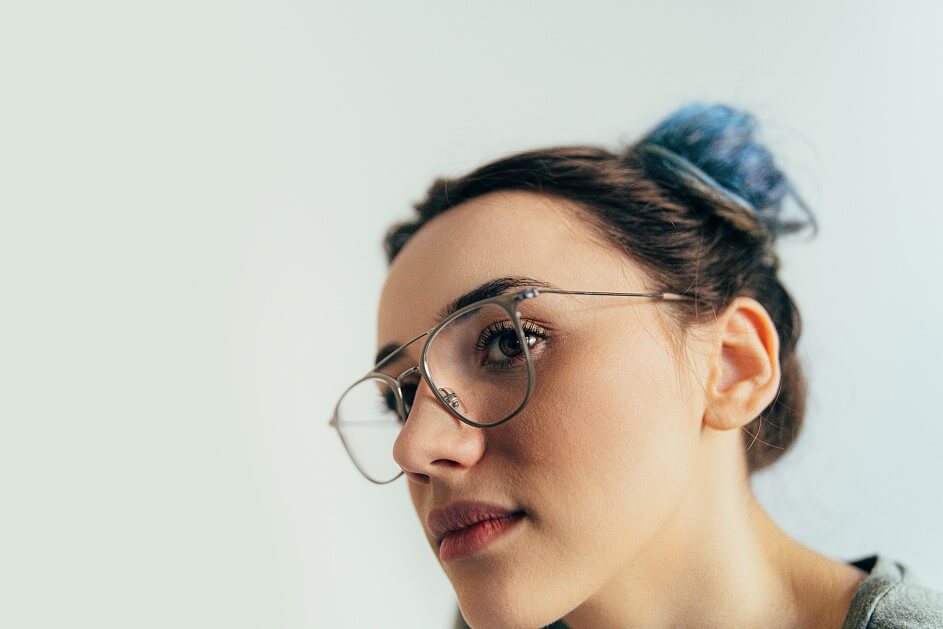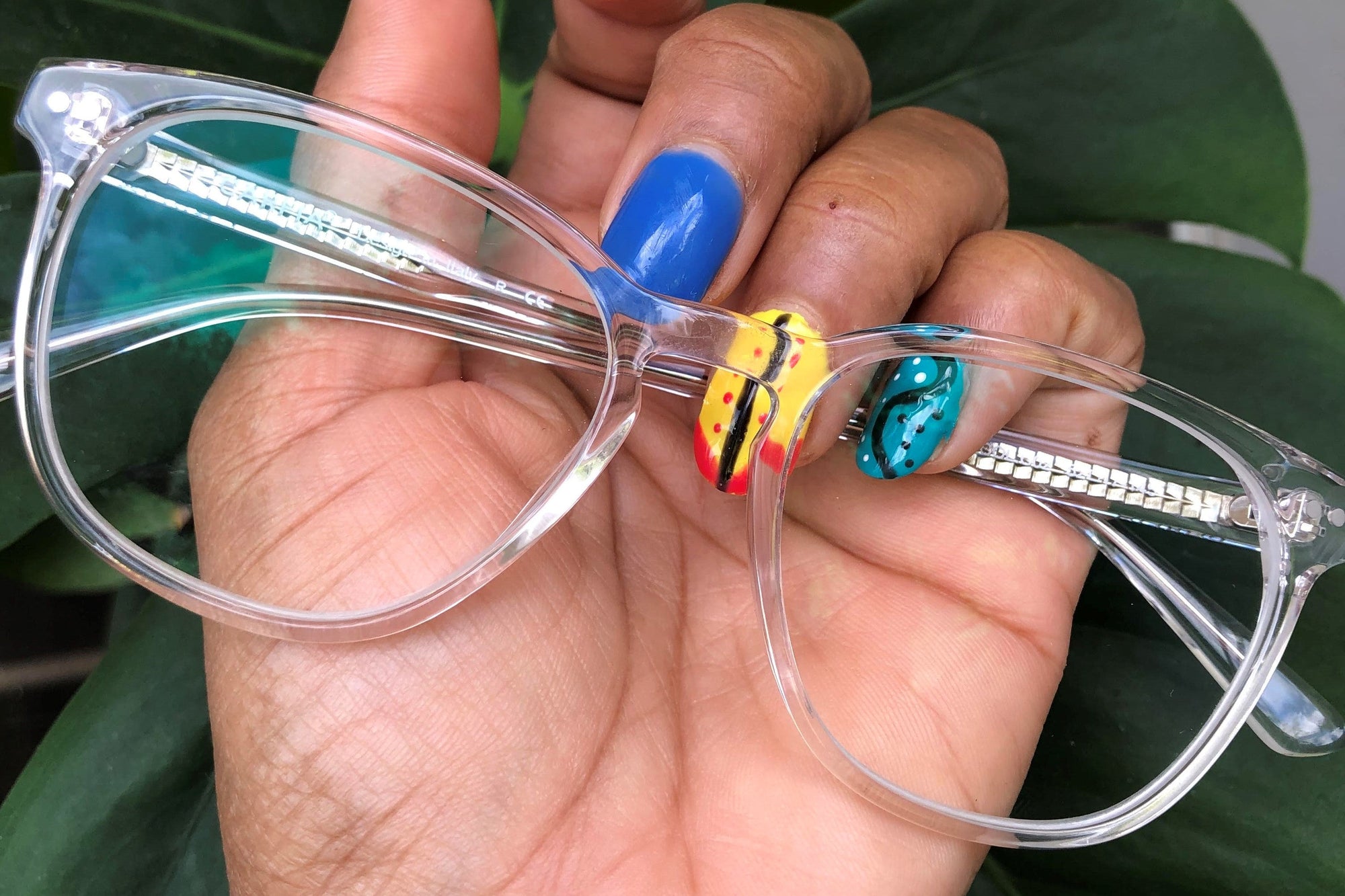Does a long-face suit wear transparent glasses?
A long face gives people a sense of being relatively thin, so it is best not to wear a transparent, thin frame, or it will show a longer face. It is best to wear glasses with wider rims and darker colors. Compared with women and men, because the overall image of the difference is relatively large, in the selection of glasses, it is best to foil the characteristics of the face and highlight the overall contour of the face. At the same time, the man with a lighter skin color can choose a lighter color frame like the tortoiseshell gold silver frame. People with dark skin color can choose a heavier color frame, like red, black, and so on.
Why do glasses with the same prescription feel different?
The style of the frame has changed. The structure of the new glasses and the old glasses (half-frame, rimless, full-frame) may be different, and the angle of the glasses may also be different, which will cause visual differences and the symptoms of dizziness after wearing the new glasses. If you used to wear rimless glasses or half-rim glasses before and switch to full-frame glasses, you will feel that his field of view is limited and you will feel a little uncomfortable when you see the edge of the frame. If you wear full-frame glasses before, you will feel the edge of the lens when you change to half-rim glasses. It's too bright to adapt. There is another situation, changing from a frame with a nose pad to a frame without nose pads. Because the distance between the lens and the eye has changed, the position of the nose pad has also changed, which directly affects the relative position of the optical center and the pupil, as well as the distance from the back vertex of the lens to the cornea, which naturally affects the visual difference. In this case, you can fine-tune the nose pads, or after a short-term adaptation, you can generally return to normal.
Glasses in a Day
With decades of experience in the optical business, it allows the fastest prescription eyewear service. Male and female frames are mostly imported from Germany, Italy, and France. All orders are shipped the same day they are received, including Saturday, ensuring your new glasses arrive quickly. The team assembles, packs, and ships your glasses at our Massachusetts facility on the same day you order them.
What is the bifocal lens?
Bifocal reading glasses are characterized by distance vision correction in the upper part of the lens and near vision correction at the bottom. If you need help with both, that's great. This lens is designed to facilitate the working of reading glasses and standard prescription glasses, all in one frame. Glasses are recommended when you are diagnosed with presbyopia, and bifocals are usually the first choice. But for intermediate vision, bifocals are difficult because they're not close enough for the reading part of the lens, and they're not far enough away for the distance part of the lens. Bifocal sunglasses have no magnification at the top, and the reading ability is at the bottom of the lens. Bifocal reading glasses can be found anywhere reading glasses are sold, but they can be harder to find than full magnifying lenses.
The origin of aspheric lens
The Visby glasses, unearthed in Gotland, Sweden, are the earliest aspheric lens found. The Vikings in the 11th century used it as a magnifying glass, and some of the best ones were made of silver, making them look like handicrafts. In 1667, Francis Smethwick grinds the first high-quality aspheric lenses and presents them to the Royal Society. That's a telescope with three aspheric elements. In 1956, Elgeet, which originally designed and manufactured optical instruments for the U.S. Navy, produced the world's first mass-produced aspheric lens for photography (Golden Navitar 12mm F1.2) for a 16mm film machine. Today, aspheric lenses are found in everything from tall telescopes to missile guidance systems to camera lenses. In the glasses we wear, the aspheric lens is familiar to consumers.
Do night driving glasses really work?
Yellow lenses reduce the amount of light entering your eye, reducing visibility. These darker colors block more blue light than yellow lenses. But they block more light from entering the eye, reducing visibility even more in low-light conditions. In fact, even yellow lenses reduce overall visible light to some extent because they block some blue light. This can be a good thing during the day, but not at night, when maximum visibility is key. Night driving glasses come in a variety of yellow and amber colors. The darkest lenses filter out the harshest light, but they filter out the largest amount of light, making it difficult to see in dim or dark conditions. Some people who wear night driving glasses say they can see better with them on. However, vision tests have shown that night driving glasses do not improve night vision, nor do they help drivers see pedestrians any faster than they would without glasses.
Which kind of lens can correct myopia?
Myopia is corrected by glasses with concave lenses, which are the thinnest in the center and thicker at the edges. The strength of the lens used to improve myopia is measured in diopter (D). The prescription for myopic glasses always begins with a minus sign. The higher the magnification of the lens, the better the effect of correcting myopia. High refractive index lenses are usually recommended to correct myopia with a diopter greater than -3.00. The lenses are thinner and lighter than regular plastic lenses, making them more attractive and comfortable. At the same time, an anti-reflective coating is strongly recommended for the correction of myopia lenses. The augmented reality coating eliminates scattered reflections in the lenses, making them look thinner and more attractive.

















